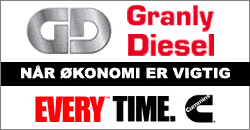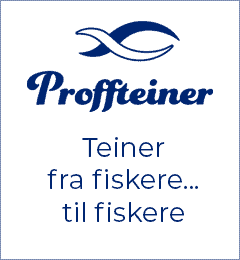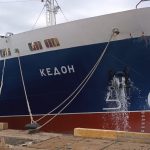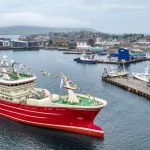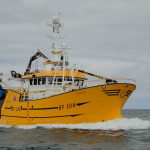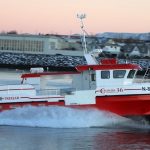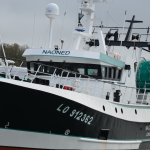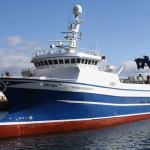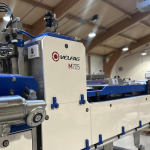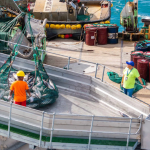A consortium of companies in Norway and Iceland have made a reality of the first new netting to be put into use that has been derived from recycled fishing gear.
‘It’s fantastic news. This has been a goal for us since we started sixteen years ago,’ said Øistein Aleksandersen, CEO of recycling specialist Nofir.
‘The fact that this is possible also looks highly positive for other industries.’

Nofir has joined with AKVA Group Egersund Net, Aquafil, Grieg Seafood and Hampiðjan to developed and produced this first net for salmon farming use, made using nylon recycled from used nets, fishing gear and other nylon products. The filaments are made from regenerated nylon from ECONYL®, and the project is supported by Handelens Miljøfond. The net has been made for a Grieg Seafood facility.
‘Producing farming nets for the conditions we have here in Norway is not easy. The requirements are strict, and there is no room for error,’ said Øistein Aleksandersen, who has led this initiative, commenting that the nets have to be able to cope with the tough conditions in Norwegian waters, and the project has taken care to ensure that the materials meet all the relevant standards.
In addition, Hampiðjan in Iceland is also producing a net, treated with the same coating, and which is deployed in a parallel test.
Nofir has been working on recycling and upcycling discarded fishing and farming nets since 2008, and Øistein Alexandersen has been impressed by the work carried out by the companies in this collaboration.
‘We really didn’t think this was an opportunity when we started. The fact that we are now looking at two industries that are leaders in circularity and many sustainability factors is great, and we are happy with our contribution to this,’ he said.
Nofir also has its own projects, including the production of football goal nets, cargo securing nets and other products from discarded equipment.
For Nofir, there is one particularly crucial learning area from the work so far.
‘In general, the entry cost for those of us who invest in this type of sustainability project is high. Research and development is a substantial cost, and it is time-consuming to bring together all the know-how to achieve results,’ he said.
‘We couldn’t have done it without financial support for the project. The crucial point is whether fish farmers in general will choose the more sustainable alternatives when they are available.’


